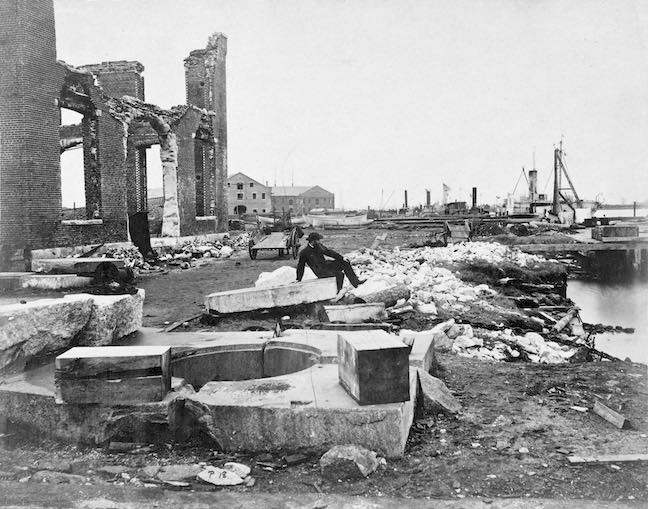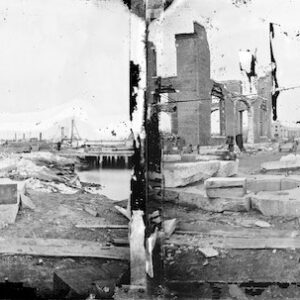| Credit: | by Gardner (James) |
|---|---|
| Date: | 1864.12 |
| Negative Size: | 8 in. x 10 in. |
| Equipment: | chain; crate |
| Locations & Lines: | Elizabeth River VA; Norfolk Navy Yard (Norfolk VA); Norfolk VA; Virginia |
| Military Units: | US Army; US Navy |
| Transports: | horse-drawn cart |
| Sources: | Library of Congress; National Archives; USAMHI – MOLLUS collection |
$6.99
File Details: AIKDm, 800 DPI, TIFF, Original Photograph, 41.6 Mb
Image ID: AIKD
Gardners Photographic Sketch Book Of The War. Vol. 1, No. 18. Ruins of Norfolk Navy Yard, Virginia. December, 1864. On Saturday, the 23d of April, 1861, the questionable policy of destroying this Navy Yard was enforced. The crews of the Cumberland and Pawnee, assisted by some volunteers, landed at nine oclock, threw the shot and small arms into the river, spike the guns, and made arrangements for firing the shops and warehouses, extending over a space of nearly two hundred acres. The marines, as early as ten oclock, had evacuated and fired their barracks, and soon after two A. M. the whole yard was in a blaze, as well as the old three decker, the Pennsylvania, the Ohio, New York, &c. The Cumberland and Pawnee, proceeded to Hampton Roads, the former shortly to go down before that formidable iron-clad, the Merrimac, which was fitted out at this yard. When the Merrimac was blown up, and Norfolk evacuated by the rebels, they did what additional damage they could to the Navy Yard and its docks.
Its accessibility made it a most convenient place as a depot for the North Atlantic blockading fleets, the James River flotilla, and Gen. Grahams army gunboats.
Some of the shops were rebuilt, and the place presented a curious spectacle of industry in the midst of ruin; while the constant arrivals kept the adjacent waters filled with vessels, including magnificent frigates and sloops-of-war, renowned in may exploits, as well as gun-boats and purchased vessels of every build and tonnage, not to mention hosts of sharp Clyde-built blockade runners, long, low, and raking, brought here by their successful captors, previous to being taken North for adjudication and translation into ships-of-war for the capture of their fellows.
Seated figure is possibly photographer James Gardner.


